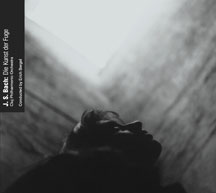Product Details
- An MVD Exclusive
- SKU: BMCCD011
- Format: CD
- UPC: 5998309300110
- Street Date: 06/06/98
- PreBook Date: 01/01/01
- Label: BMC Records »
- Genre: Classical
- Run Time: 92 mins
- Number of Discs: 2
- Year of Production: 1991
- Box Lot: 25
- Territory: NA,GB,AU
Product Assets
Bach, Johann Sebastian / Bergel, Erich - Die Kunst Der Fuge
This live recording is an homage to a great musician known as one of the best interpreters of Bach's chef d'oeuvre.

- List Price: $19.99
- Your Price: $19.99
- In Stock: 1
You must login to place orders.
Experts consider Bach's last great work the zenith of his career and also the centre of European musical culture. Erich Bergel contributed to the after-life of The Art of Fugue not only with scientific conclusions, but also as a composer: he completed the unfinished closing fugue of the cycle, a feat later judged an epoch-making achievement' by Karajan.
Track Listing
Disc 1:
|
Press Quotes
In the last issue (Volume 3, Number 4), W.A. Grieve-Smith wrote on recordings of Bach's Art of Fugue, most executed on organ. Even though the Art of Fugue is a masterpiece, I find it very, very difficult to sit through nearly 90 minutes of dense and exemplary counterpoint in d minor. (In college, I squirmed through a performance of the work for piano. Without a score to occupy me, I imagined dismantling the piano while the pianist was playing upon it. This is a rather effective strategy I often employ so as not to disrupt other concert goers.) The best way to come to grips with the Art of Fugue is probably by picking through a contrapunctus on one's own . I won't go into whether your personal copy should be open score or conventionally notated for keyboard. I've always preferred performances of the Art of Fugue where each voice is presented as a clear line, and this is probably why I prefer unconventional recordings (because the piano has a pedal which is often used inappropriately to blur the lines is yet another reason). There are but three recordings of the Art of Fugue in my collection. The equally loved and despised version by the Juilliard String Quartet who employ a special viola to reach low notes (Sony S2K 45937 with Robert Mann, Joel Smirnoff, Samuel Rhodes, and Joel Krosnick), a wonderful version for saxophone quartet with the acrobatic Berliner Saxophon Quartett (cpo 999 058-2), and this somewhat recent version for full orchestra orchestrated and conducted by Erich Bergel. Bergel's orchestration is fairly conservative giving the strings the most prominence in the voices, using the winds and brass for support. It's not the klangfarbenmelodie Webern used in his orchestration of the Ricercare from the Musical Offering, which might be curious for one fugue but for the whole set probably bizarre, and it's not like any of the lush and slightly showy Stokowski-Bach orchestrations. Most of the orchestrated lines are somewhat predetermined by their ranges, consequently there is much to do for the low brass and bassoons. The work was recorded live at a public concert in 1991 in the Synagogue of Dohány utca in Budapest. There is a magisterial richness to the sound, and almost a minute of applause at the end of the last and towering fugue. Everybody has probably heard the story attested to by C.P.E. Bach, that Bach left the last fugue incomplete and died while writing it just after he introduced the B-A-C-H motive into the music (in German musical spelling, B is b-flat and H is b-natural). I recall more than one keyboard performance where only Bach's notes are worthy of performance, and so the fugue trails off abruptly, the dense tapestry of counterpoint reduced suddenly to a single unresolved voice. This is an action which makes you realize you're listing to a performance and not just music. Bergel has completed the last contrapunctus and this last fugue is this performance's climax. Probably intended to be a quadruple fugue, this last fugue is the longest (there are four subjects or themes, each is developed into a fugue on its own and then combined with the previously introduced subjects). It is just 14 minutes on this recording, roughly four times longer than most of the other fugues and canons in the set. Bergel is on his own after the eight minute mark: he completes the third section where B-A-C-H appears, and for the fourth section, he reprises the opening bars of Contrapunctus I bringing in each of the other subjects for a bit before wrapping the whole thing up. Bergel doesn't extemporize more than he has to, and, the truth is-though I haven't work it out here for myself -- that the voices in Bach's fugues tend to work together only in a fixed number of ways. Bergel's presence is thusly very modest and allows Bach's music to stand on its own and be heard.
—Grant Chu Covell , La Folia
More controversial, though, will be Bergel's 1985 completion of the final fugue (published by Brockhaus). Many performers (including Münchinger) simply dribble off where Bach stopped writing and append the chorale 'Wenn wir in Höchsten Nöten sein'. To most observers it is better to leave Bach's composition as it is. It is bad enough, we reason, that we orchestrate it and impose dynamics and tempos. Why cross the line by adding actual notes? In any case, when Bergel reaches Bach's conclusion he continues in the same vein, then reintroduces the original theme (taken from Contrapunctus I) and combines all four themes in a technicolor display, complete with a dramatic Neapolitan sixth chord, followed by a very long tonic pedal and a Picardy third at the close.
—Paul L Althouse, American Record Guide
